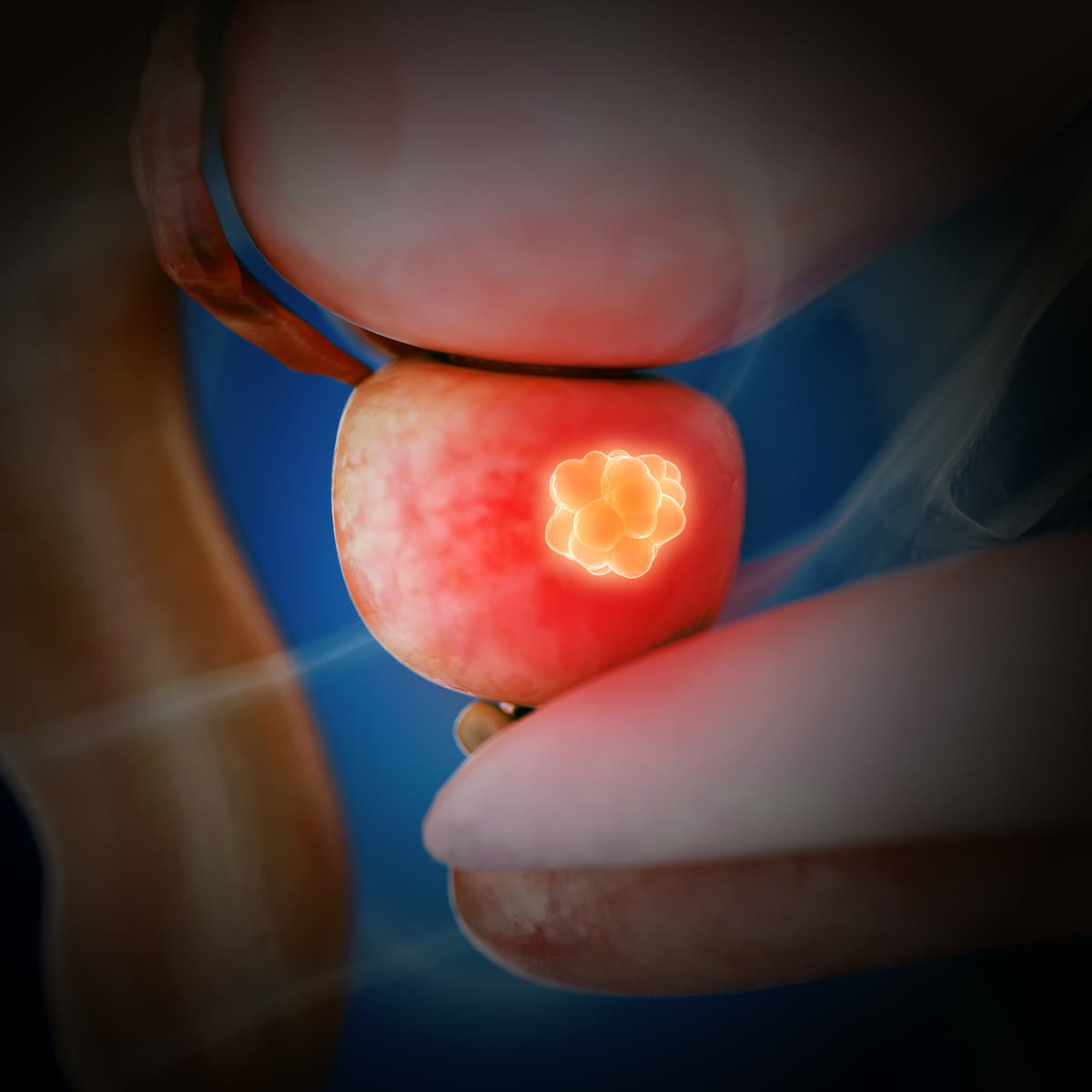64Cu-SAR-bisPSMA PET Detects More Prostate Cancer Lesions vs SOC
The novel PET imaging agent detected significantly more PSMA-positive prostate cancer lesions vs SOC in patients with low PSA levels.
The novel PET imaging agent detected significantly more PSMA-positive prostate cancer lesions vs SOC in patients with low PSA levels.

Copper Cu 64 sarcophagine bispecific prostate-specific membrane antigen (64Cu-SAR-bisPSMA) PET imaging detected a statistically significant number of PSMA-positive prostate cancer lesions compared with standard-of-care gallium 68 (68Ga) PSMA-11 PET/CT in patients with low prostate-specific antigen (PSA) levels, according to a press release from Clarity Pharmaceuticals.1
The experimental agent met the primary end point and demonstrated that 64Cu-SAR-bisPSMA PET/CT detected more lesions per patient than 68Ga-PSMA-11 PET/CT. The investigators noted that these results support the hypothesis that the agent improves early detection of recurrence and staging of prostate cancer in this patient population.
SAR-bisPSMA is a targeted copper theranostic that can be used for either imaging or therapy, depending on which copper isotope is paired with it. It was designed to connect 2 PSMA-targeting agents to the developer’s SAR technology that holds copper isotopes in a chelator; the SAR technology prevents copper leakage into the body.
Supporting results came from the investigator-initiated phase 2 Co-PSMA trial (NCT06907641), which evaluated whether there was a difference in the number of prostate cancer lesions detected, the diagnostic accuracy, and the magnitude of clinical management change in patients with low PSA who are candidates for curative salvage therapy with 64Cu-SAR-bisPSMA compared with standard-of-care imaging.
A full analysis of the data from the Co-PSMA trial will be shared at an upcoming international conference.
“Achieving the primary end point in the Co-PSMA trial, which was a head-to-head trial against a [standard-of-care] competing product, is yet another important step in the development of 64Cu-SAR-bisPSMA as we look to further validate this agent as best in class through 2 registrational trials with 2 [fast track designations (FTDs)] under our belt for diagnostic applications and a strong focus on commercialization,” said Alan Taylor, PhD, executive chairperson of Clarity Pharmaceuticals, in the press release.1
The Co-PSMA trial enrolled 50 patients with low PSA who were candidates for curative salvage therapy. Eligible patients were 18 years or older, had a radical prostatectomy with no salvage therapy, and had a PSA level between 0.2 and 0.75 ng/mL.2 Exclusion criteria included prior receipt of, or contraindication to, salvage radiotherapy for biochemically recurrent prostate cancer; a history of current active malignancy; systemic therapy for metastatic prostate cancer; and known or expected hypersensitivity to 64Cu-SAR-bisPSMA.
Treatment with 64Cu-SAR-bisPSMA consisted of a single administration at a dose of 200 MBq.
Previously, in January 2025, 64Cu-SAR-bisPSMA was granted FTD for the PET imaging of patients with a biochemical recurrence of prostate cancer following definitive therapy who have PSMA-positive prostate cancer lesions.3 In August 2024, the imaging agent received FTD for patients with suspected prostate cancer metastasis who are candidates for initial definitive therapy.4
Both FTDs were primarily granted due to results from the phase 1/2 COBRA trial (NCT05249127), which evaluated the safety and efficacy of 64Cu-SAR-bisPSMA in patients with biochemical recurrence of prostate cancer after definitive therapy. Results from COBRA were most recently shared at the Society of Nuclear Medicine & Molecular Imaging 2024 Annual Meeting.5
In COBRA, 60% of patients who underwent follow-up standard-of-care PSMA PET imaging had a positive PSMA PET scan result compared with 70% of patients who received 64Cu-SAR-bisPSMA who had a positive scan result on same-day imaging and 90% who received 64Cu-SAR-bisPSMA who had a positive scan result on next-day imaging. The average sum of lesions across all readers identified by 64Cu-SAR-bisPSMA was 26.3 lesions on same-day imaging and 52.6 lesions on next-day imaging compared with 20 lesions with standard-of-care PET. 64Cu-SAR-bisPSMA was also able to identify lesions more than 6 months earlier than standard-of-care PSMA PET agents; 6 months was the last follow-up visit for that trial.
References
- Co-PSMA trial achieves primary endpoint. News release. Clarity Pharmaceuticals. October 14, 2025. Accessed October 15, 2025. https://tinyurl.com/y4k38ana
- Comparative performance of 64Copper [64Cu]-SAR-bis-PSMA vs 68Ga PSMA-11 PET CT for the detection of prostate cancer recurrence in the setting of biochemical failure following radical prostatectomy (Co-PSMA). ClinicalTrials.gov. Updated April 2, 2025. Accessed October 15, 2025. https://tinyurl.com/2zra3zze
- Clarity receives U.S. FDA fast track designation for Cu-64 SAR-bisPSMA in biochemical recurrence of prostate cancer. News release. Clarity Pharmaceuticals. January 24, 2025. Accessed October 15, 2025. https://tinyurl.com/nhk7p64b
- Clarity receives FDA fast track designation for 64Cu-SAR-bisPSMA. News release. Clarity Pharmaceuticals. August 22, 2024. Accessed October 15, 2025. https://tinyurl.com/2hw9bumt
- Nordquist L, Lengyelova E, Saltzstein D, et al. COBRA: assessment of safety and efficacy of 64Cu-SAR-bisPSMA in patients with biochemical recurrence of prostate cancer following definitive therapy. Presented at: Society of Nuclear Medicine & Molecular Imaging 2024 Annual Meeting; June 8-11, 2024; Toronto, ON, Canada.
Prolaris in Practice: Guiding ADT Benefits, Clinical Application, and Expert Insights From ACRO 2025
April 15th 2025Steven E. Finkelstein, MD, DABR, FACRO discuses how Prolaris distinguishes itself from other genomic biomarker platforms by providing uniquely actionable clinical information that quantifies the absolute benefit of androgen deprivation therapy when added to radiation therapy, offering clinicians a more precise tool for personalizing prostate cancer treatment strategies.